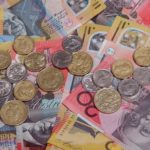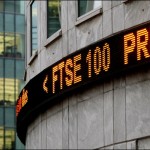
Yesterday’s trade (in GMT terms) saw GBP/USD within the range of 1.2177-1.2327. The pair closed at 1.2298, soaring 0.94% compared to Mondays close. It has been the 167th gain in the past 362 trading days and also the sharpest one since September 6th. The daily high has been an exact test of the high from October 12th. The major pair has pared its slump to 5.24% so far during the current month, after losing 1.23% in September.
At 7:34 GMT today GBP/USD was edging down 0.19% on the day to trade at 1.2275. The pair touched a daily high at 1.2317 during the early phase of the Asian trading session, overshooting the daily R1 level, and a daily low at 1.2257 during late Asian trade.
On Wednesday GBP/USD trading may be influenced by the following macroeconomic reports and other events as listed below.
Fundamentals
United Kingdom
Jobless Claims, ILO Unemployment Rate
The number of jobless claims in the United Kingdom probably rose by 3 000 in September from a month ago, according to market expectations. In August, claims increased by 2 400, following a revised down drop by 3 600 in the prior month.
The rate of unemployment in the UK, estimated in accordance with ILO (International Labour Organization) standards, probably remained at 4.9% for a fourth consecutive three-month period during the three months to August compared to the same period a year ago. It has been the lowest rate since the three-month period to September 2005.
During the period May-July there were 31.77 million people in employment, or an increase by 174 000 compared to the three months to April 2016. Compared to May-July 2015, the figure represented an increase by 559 000. 23.25 million persons were in full-time employment during the period May-July, or 434 000 more compared to the same period a year earlier. At the same time, 8.51 million persons were in part-time employment, or an increase by 126 000 compared to a year ago. The rate of employment was registered at 74.5%, or the highest since 1971, when records were initiated.
During the period May-July, 1.63 million people were unemployed, or a decrease by 39 000 compared to those reported during the three months to April 2016. Compared to May-July 2015, the figure represented a decrease by 190 000. It has also been the lowest number of unemployed people since the three months to May 2008.
In May to July, there were 8.83 million people aged between 16 and 64, who were out of work and not seeking or available for employment, according to data by the Office for National Statistics (ONS). This represented a decrease by 92 000 compared to the three-month period to April 2016 and a drop by 195 000 compared to May-July 2015.
Average earnings including bonuses probably went up 2.3% during the three months to August 2016 compared to the same period a year ago. In the three-month period to July 2016 earnings grew 2.3% year-on-year to GBP 505 per week. Pay growth has been above the rate of consumer inflation since the beginning of 2015, which led to a sound increase in real income. However, wage growth is still lower compared to the period preceding the financial crisis.
In case the rate of unemployment met expectations or fell even further while the number of claims increased at a lesser-than-projected pace in September, this would have a strong bullish effect on the Sterling. The official report by the ONS is due out at 8:30 GMT.
United States
Housing Starts and Building Permits
The number of housing starts in the United States probably rose 2.5% to 1.175 million units in September, according to market expectations, from the seasonally adjusted annual rate of 1.142 million during the prior month. The latter has been the lowest number of starts since May, when a revised down level of 1.128 million was reported. In August, starts of single-family houses fell at a monthly rate of 6% to 722 000, or the lowest level since October 2015, while starts of buildings with five units or more dropped 6.9% to reach 403 000. During the month, housing starts marked the largest increase in the Northeast (7.6%), followed by those in the Midwest (5.6%) and those in the West area (1.8%). On the other hand, housing starts were fewer in the South region (-14.8%).
Meanwhile, the number of building permits in the country probably went up 0.9% to 1.165 million in September from a revised up annual level of 1.152 million in August (1.139 million previously). If expectations were met, this would be the highest level since January, when the revised up 1.188 million units were reported. Single-family authorizations rose at a monthly rate of 3.7% to reach 737 000 units in August, while permits for buildings with five units or more were reported to have decreased 8.4% to 370 000. Authorizations were fewer in the South area (-3.4%), while increasing in the West (0.7%), in the Midwest (4.2%) and in the Northeast region (5.1%).
In case a higher-than-anticipated figure for either of the two indicators is reported, this would have a moderate bullish effect on the US dollar. The official housing data are due out at 12:30 GMT.
Fed speakers
At 12:45 GMT the Fed President for San Francisco and also a FOMC member, John Williams, is expected to speak on the diversity in the financial system in Newark, New Jersey.
At 17:30 GMT the Fed President for Dallas, Robert Kaplan, who does not have a voting right but takes part in policy discussions, is to take a statement at luncheon, sponsored by Fort Worth Chamber of Commerce in Fort Worth.
Fed’s Beige Book
At 18:00 GMT the Federal Reserve is to release its ”Beige Book” report. It is published eight times during the year. Each of the banks in the 12 Federal Reserve Districts gathers data in regard to current economic situation in the country on the basis of interviews with key business contacts, economists, market experts, and other sources. In case the Beige Book presents an optimistic economic outlook, this will usually support the US Dollar, while a pessimistic view will have a bearish effect on the currency.
Bond Yield Spread
The yield on UK 2-year government bonds went up as high as 0.247% on October 18th, after which it closed at 0.212% to add 0.008 percentage point compared to October 17th.
Meanwhile, the yield on US 2-year government bonds climbed as high as 0.831% on October 18th, after which it fell to 0.803% at the close to lose 1.6 basis points (0.016 percentage point) compared to October 17th.
The spread between 2-year US and 2-year UK bond yields, which reflects the flow of funds in a short term, narrowed to 0.591% on October 18th from 0.615% on October 17th. The October 18th yield spread has been the lowest one since September 15th, when the difference was 0.585%.
Daily, Weekly and Monthly Pivot Levels
By employing the Camarilla calculation method, the daily levels of importance for GBP/USD are presented as follows:
R1 – 1.2312
R2 – 1.2326
R3 (Range Resistance – Sell) – 1.2339
R4 (Long Breakout) – 1.2381
R5 (Breakout Target 1) – 1.2429
R6 (Breakout Target 2) – 1.2449
S1 – 1.2284
S2 – 1.2271
S3 (Range Support – Buy) – 1.2257
S4 (Short Breakout) – 1.2216
S5 (Breakout Target 1) – 1.2167
S6 (Breakout Target 2) – 1.2147
By using the traditional method of calculation, the weekly levels of importance for GBP/USD are presented as follows:
Central Pivot Point – 1.2241
R1 – 1.2392
R2 – 1.2598
R3 – 1.2749
R4 – 1.2901
S1 – 1.2035
S2 – 1.1884
S3 – 1.1678
S4 – 1.1473
In monthly terms, for GBP/USD we have the following pivots:
Central Pivot Point – 1.3113
R1 – 1.3312
R2 – 1.3645
R3 – 1.3844
R4 – 1.4042
S1 – 1.2780
S2 – 1.2581
S3 – 1.2248
S4 – 1.1914





